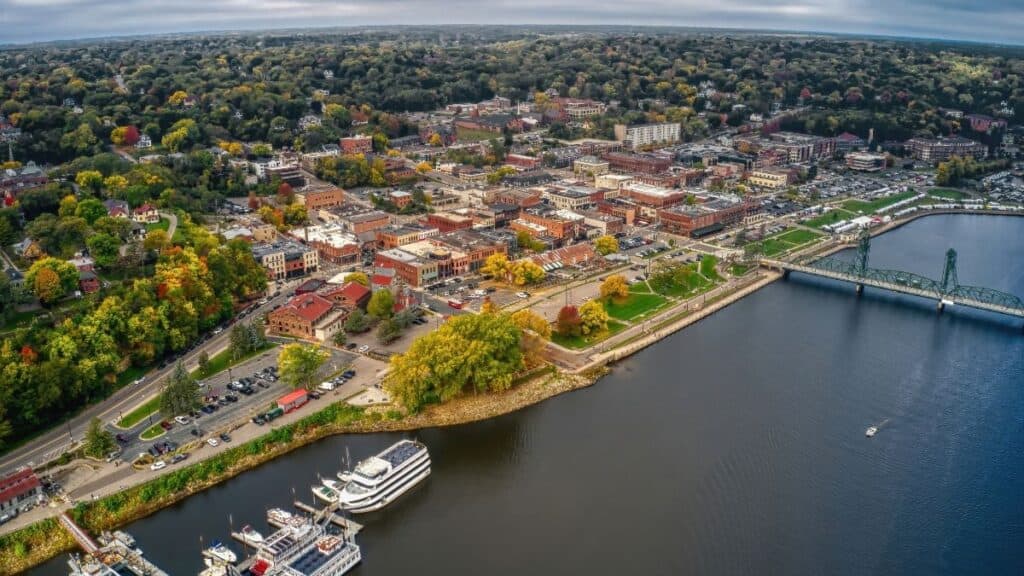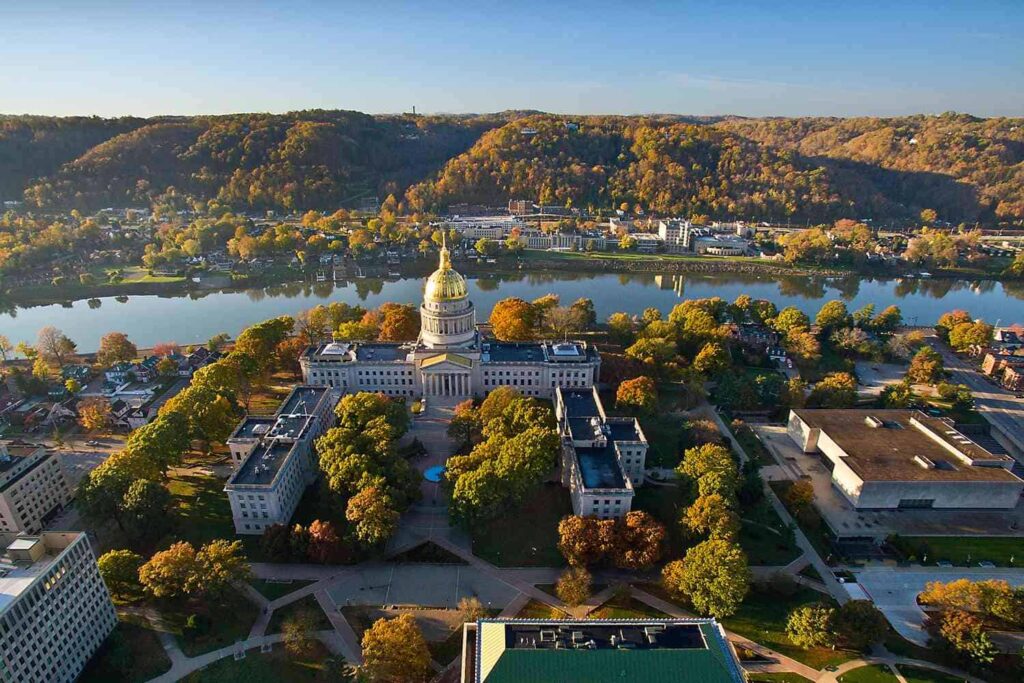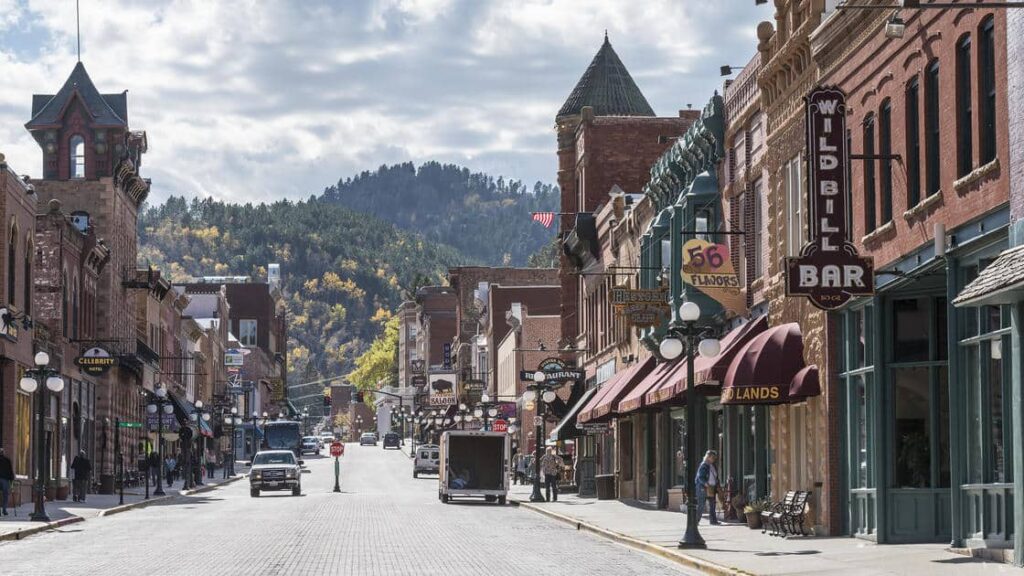Top 10 Best and Worst States for Financial Literacy


Financial literacy, or money management skills, are essential for daily life and long-term well-being, guiding informed decisions about spending, saving, and investing. Financial literacy helps you avoid debt, save money, and learn to make money work for your long-term financial goals.
In 2024, Creditsecrets.com ranked the financial literacy of all 50 U.S. states, offering guidance for policymakers, educators, and financial institutions to address gaps in financial education and economic stability nationwide.
Understanding money helps people use resources wisely, avoid debt, and plan for the future, leading to smarter choices that benefit individuals and their communities. Knowing how to budget, save, invest, and handle credit wisely sets you up for a more secure future.
This article offers a detailed look at financial literacy across the United States by highlighting the top 10 states demonstrating the strongest financial knowledge, as well as the 10 states where financial literacy scores are the lowest.
Is your state on the list? Let’s find out and see how it compares to others!
Study Methods

The analysis used data from sources like the FDIC and BEA. Researchers studied nine metrics in education and economic habits.
Education metrics included graduation rates and financial literacy in schools. Economic habits considered credit scores, spending ratios, unbanked households, and access to banks.
States were graded on all metrics to determine rankings. Positive financial behaviors were weighted more heavily than negative ones.
10 Most Financially Literate States

The top 10 financially literate states in the USA for 2024 showcase impressive scores in both education and economic habits.
These states excel in areas such as high school graduation rates, average credit scores, and access to financial institutions. Their success offers valuable insights into the factors that contribute to strong financial literacy.
How Much You Need To Live Comfortably in Your State (According To New Study)
1. Nebraska

Nebraska takes the top spot in financial literacy with an impressive score of 62.37 and an A grade. The state boasts a high school graduation rate of 92.16% and an average credit score of 731.
Nebraska’s success stems from its low unbanked rate of just 3.00%, indicating that most residents have access to banking services.
The state also excels in financial education and offers a high number of financial institutions per capita, making it easier for residents to access banking services and financial advice.
2. Minnesota

Minnesota follows closely with a score of 61.18 and an A grade. The state’s high school graduation rate stands at an impressive 94.13%, while the average credit score reaches 742.
Minnesota’s strengths include a low unbanked rate of 2.40% and a well-balanced spending vs. income ratio. These factors suggest that residents manage their money wisely and have good access to financial services.
3. Virginia

Virginia secures the third position with a score of 60.40 and an A grade. The state maintains a solid high school graduation rate of 91.38% and an average credit score of 721.
Virginia’s financial literacy success is largely due to its remarkably low unbanked rate of 1.80%. The state also demonstrates balanced economic habits among its residents, indicating a good overall understanding of personal finance.
4. Vermont

Vermont ranks fourth with a score of 58.67 and a B grade. The state leads in high school graduation rates at 94.55% and boasts an average credit score of 736.
Vermont stands out for its absence of predatory lenders, protecting residents from potentially harmful financial practices. The state also maintains a strong financial education infrastructure, ensuring that students learn important money management skills early on.
5. Oregon

Oregon claims the fifth spot with a score of 58.28 and an A grade. The state reports a high school graduation rate of 91.87% and an average credit score of 731.
Oregon’s standout feature is its low unbanked rate of 1.60%, indicating that a vast majority of residents have access to traditional banking services. This access likely contributes to better financial habits and decision-making among Oregon’s population.
6. Utah

Utah holds the sixth position with a score of 57.47 and an A grade. The state boasts a high school graduation rate of 93.17% and an average credit score of 727.
Utah’s most impressive feature is its extremely low unbanked rate of 1.20%, the lowest among the top 10 states. This statistic suggests that nearly all Utah residents have access to banking services, which can lead to better financial management and literacy.
 If you like what you are reading, then click like and subscribe to my newsletter. We share tips to waste less time and money.
If you like what you are reading, then click like and subscribe to my newsletter. We share tips to waste less time and money.
7. North Carolina

North Carolina ranks seventh with a score of 56.43 and an A grade. The state’s high school graduation rate stands at 89.70%, with an average credit score of 707.
North Carolina’s strength lies in its residents’ ability to balance spending with income effectively. This skill indicates a good understanding of budgeting and financial planning among the state’s population.
8. Maryland

Maryland secures the eighth spot with a score of 56.32 and a B grade. The state maintains a high school graduation rate of 91.09% and an average credit score of 716.
Maryland’s financial literacy success comes from a good balance between credit scores and spending habits. These figures suggest that residents manage their credit responsibly while maintaining healthy spending patterns.
Why Your Credit Score Matters More Than Ever: 13 Ways It Could Save You Big
9. Iowa

Iowa claims the ninth position with a score of 55.60 and a B grade. The state reports a high school graduation rate of 93.32% and an average credit score of 729.
Iowa’s standout feature is its high number of financial institutions per capita. This abundance of banking options likely contributes to better financial access and education for Iowa residents, supporting overall financial literacy.
10. Ohio

Ohio rounds out the top 10 with a score of 55.40 and an A grade. The state’s high school graduation rate is 91.74%, with an average credit score of 715.
Ohio’s key strength is its low unbanked household rate of 3.50%. This low rate indicates that a large majority of Ohio residents have access to banking services, which can lead to better financial habits and increased financial literacy.
10 Least Financially Literate States

While some states lead in financial literacy, others face significant challenges. The bottom 10 states struggle with issues like high unbanked rates, limited access to financial institutions, and the presence of predatory lenders.
Understanding these challenges is crucial for developing targeted strategies to improve financial literacy across the nation
10. New York

New York ranks 10th among the least financially literate states with a score of 43.17 and a D grade. The state’s high school graduation rate is 88.03%, while the average credit score stands at 722.
New York faces challenges with a high unbanked rate of 5.90%, meaning many residents lack access to basic banking services. The state also struggles with limited access to financial institutions, making it harder for people to engage with formal banking systems and improve their financial literacy.
9. Tennessee

Tennessee holds the 9th position with a score of 43.07 and a C grade. The state reports a high school graduation rate of 89.74% and an average credit score of 701.
Tennessee’s main challenge lies in its high number of predatory lenders, with 9.74 such institutions per 100,000 residents. This prevalence of high-interest, short-term loan providers can trap residents in cycles of debt and hinder their financial progress.
8. Oklahoma

Oklahoma ranks 8th, scoring 42.83 with a C grade. The state’s high school graduation rate is 88.71%, and the average credit score is 692.
Like Tennessee, Oklahoma struggles with a high reliance on predatory lenders, with 6.57 such institutions per 100,000 residents. This issue can lead to financial difficulties for many Oklahoma residents, potentially undermining efforts to improve overall financial literacy in the state.
20 States Fighting for Higher Minimum Wages (Despite Concerns)
7. South Carolina

South Carolina sits at 7th place with a score of 42.39 and a C grade. The state maintains a high school graduation rate of 89.61% and an average credit score of 693.
South Carolina faces two significant challenges: a high unbanked rate of 5.50% and a considerable presence of predatory lenders. These factors combined can create barriers to financial literacy and stability for many of the state’s residents.
 If you like what you are reading, then click like and subscribe to my newsletter. We share tips to waste less time and money.
If you like what you are reading, then click like and subscribe to my newsletter. We share tips to waste less time and money.
6. Mississippi

Mississippi ranks 6th, scoring 42.11 with a B grade. The state’s high school graduation rate is 86.49%, while the average credit score is 681. Mississippi faces the highest unbanked rate among all states at 11.10%.
This alarming statistic indicates that a significant portion of the population lacks access to basic banking services, which can severely hinder financial literacy and economic well-being.
5. South Dakota

South Dakota holds the 5th position with a score of 41.91 and an F grade. Despite a high school graduation rate of 93.05% and an average credit score of 733, the state struggles with financial literacy.
South Dakota’s main challenge is its unexpectedly high unbanked rate of 3.70%, which is surprising given its other positive indicators. This discrepancy suggests that there might be other factors affecting financial literacy in the state.
4. Arkansas

Arkansas ranks 4th with a score of 41.89 and a D grade. The state reports a high school graduation rate of 88.67% and an average credit score of 694.
Arkansas faces two main challenges: low access to financial institutions and a high rate of non bank personal loans. These factors can make it difficult for residents to engage with traditional banking services and may push them towards less favorable financial options.
3. Hawaii

Hawaii sits at 3rd place, scoring 41.72 with a D grade. The state boasts a high school graduation rate of 92.93% and an average credit score of 732.
Despite these positive indicators, Hawaii struggles with a high spending vs. income ratio of 0.88, suggesting that residents may be overspending relative to their earnings.
The state also faces challenges with limited access to financial institutions, which can hinder residents’ ability to manage their finances effectively.
2. California

California ranks 2nd with a score of 39.59 and a D grade. The state’s high school graduation rate is 84.45%, while the average credit score is 721.
California faces significant challenges with a high unbanked rate of 5.00% and low access to financial services. These factors can create barriers to financial literacy and stability for many of the state’s residents, despite its reputation as an economic powerhouse.
1. Alaska

Alaska ranks as the least financially literate state, scoring 36.62 with an F grade. The state maintains a high school graduation rate of 93.31% and an average credit score of 717.
Alaska’s main challenges are the absence of K-12 financial literacy instruction and a high spending vs. income ratio.
These factors suggest that residents may lack foundational financial knowledge and struggle with managing their income effectively, contributing to the state’s low financial literacy ranking.
Empowering Financial Futures

Financial literacy shapes both individual success and community prosperity. The contrast between top-performing states and those facing challenges highlights the importance of targeted education and policy initiatives.
Factors like access to banking services, school-based financial education, and responsible lending practices are crucial in building financially savvy communities.
As we move forward, states can learn from each other’s experiences to create more effective programs and policies. Through collective effort, we can boost financial literacy across the nation, creating a more economically resilient America for future generations.
 If you like what you just read, then subscribe to my newsletter.
If you like what you just read, then subscribe to my newsletter.
- People Are Fleeing These States And Where They Are Flocking To
- Big Bills Ahead: 20 States With the Highest Cost of Living
AI was used for light editing, formatting, and readability. But a human (me!) wrote and edited this.



